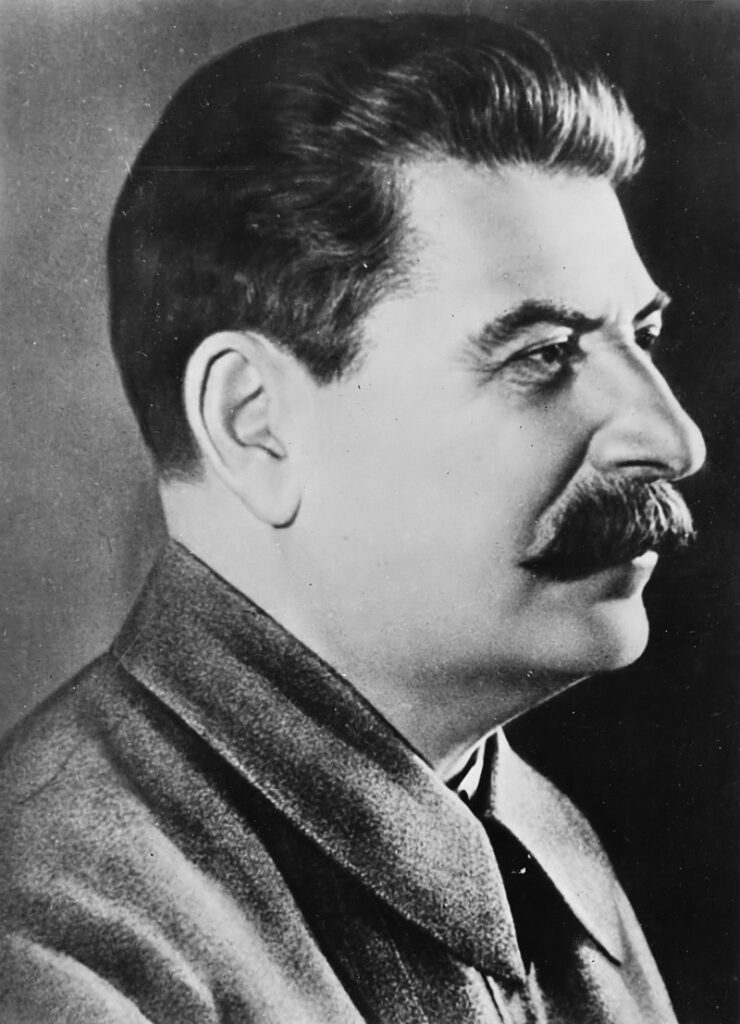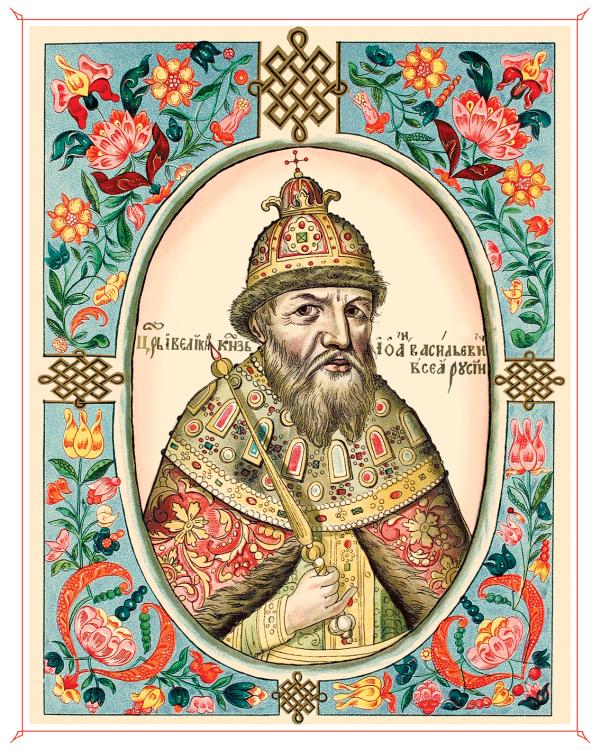Table of Contents
The connection between Stalin and the 16th century despot Ivan the Terrible - a social system founded on bloodshed Read a biography of Stalin⑷.

Joseph Stalin (1878-1953)Wikipedia.
Continued saImon Seberg MontefioriworkStalin, the Red Czar and His Courtiers.The following are some of the memorable passages from the
Beginning of the Great Purge of 1937
Orders were now given to arrest and execute suspects by assigning numbers in the thousands, without even identifying individual suspects by name. On July 2, 1937, the Politburo ordered the local secretariats to arrest and shoot "the most hostile anti-Soviet elements. The Troika Tribunal, consisting of three judges, was to pass judgment in the field. The three meant the local party secretary, the prosecutor, and the head of the NKVD.
The purpose of the order was to "finally wipe out" all enemies and those incapable of socialist reeducation, thereby breaking down class barriers and achieving a people's paradise.
In order to find meaning in the slaughter as a final solution, faith in the ideals of Bolshevism was essential, but it was tantamount to a religion that believed in the systematic destruction of a class as a good thing. This is why the method of allocating and slaughtering people in numbers was adopted as a matter of course, in the same way that the Five-Year Plan allocated industrial production. The details did not matter. (omitted)
The total number of people to be shot was 72,950, and the total number of people to be arrested was 259,450, although some regions did not receive their allotment due to oversight. On the other hand, some localities were able to complete their quotas in excess of the number allotted. For those arrested, their families were also to be sent to concentration camps. The Politburo approved this order the next day.
This "minced meat system" soon began operating at maximum output. The witch hunts were at their height, and the number of victims being put into the system was growing, fueled by the jealousy and ambition of the powerful in each region.
Regions that had already reached their quotas requested additional quotas. Therefore, the Politburo approved a new quota of 22,500 shootings between August 25 and December 15, and later added another 48,000.
In this sense, Hitler's crimes, in which he limited his targets to Jews and Gypsies and carried out systematic slaughter, are very different from Stalin's Great Terror.
In the Soviet Union, killings were sometimes carried out unprincipled. For example, entire families were murdered and persecuted because they remembered long-forgotten old words, because their past association with opponents came to light, because of envy of others' jobs, wives, or housing, because of personal vengeance, or by sheer chance. The reason could have been anything.
It is better to go too far than not far enough," Ejoff addressed his men. The initial quota swelled over time, reaching 767,397 arrests and 380,798 executions.
Hakusuisha, Simon Seberg Montefiori, translated by Toru Someya, "Stalin: The Red Czar and His Courtiers," P410-411
Some line breaks have been made.
The Great Purge of 1937 was even more advanced than previous purges.
What a surprise, they determined the number of killings and arrests to be assigned ahead of time and enforced that number as a quota.
And in a sense, this was also a test of loyalty for the local bureaucracy.
To show that they were in line with Stalin's intentions, local bureaucrats were willing to fulfill their quotas. That is why they were so eager to execute more people than their quota. It became the ultimate example of human life being replaced by a mere matter of numbers.
A social system founded on bloodshed
Certainly the ringleader was Stalin. But Stalin was never the sole culprit.
The view that one person is responsible for the Great Terror is not only inaccurate but also unhelpful. This is because the systematic killings began immediately after Lenin's seizure of power in 1917 and did not end after Stalin's death.
In this "social system founded on bloodshed," today's murder was justified for tomorrow's happiness. The Great Terror cannot be simply put away as a result of Stalin's monstrosity.
But on the other hand, there is no doubt that Stalin's uniquely intense personality, full of hostility and vengeance, gave form to terror and expanded and accelerated it.
'The greatest joy,' Stalin once told Khamenev. 'To aim at the enemy, to have everything ready, to take complete revenge, and then to go to sleep.'
Without Stalin, the Great Terror would not have happened. But the Great Terror was also the result of the kinship and hatred of the Bolshevik village, a closed sect that had already been a crucible of envy and jealousy since the days of exile and war.
Hakusuisha, Simon Seberg Montefiori, translated by Toru Someya, "Stalin: The Red Czar and His Courtiers," P413
Some line breaks have been made.
Stalin's terror was not unique to him, but the Soviet political system itself, which had been in place since Lenin's time. To forget this and place all the blame on Stalin personally would be to do a great disservice to historical understanding, according to the author.
Corruption among big-name politicians
The corruption of big politicians was well known. Yagoda was rumored to be using public money to live in his palace and trade in diamonds. Yakir, a landowner, was making money by renting his villa to others.
The generals' wives, such as Oliga Buzhonnaya and Galina Egorova (who joked around with Stalin at Nadja's last party), frequented embassies and "salons," "dressed in fashionable clothes, mingling with glittering guests, and living a life of pomp and circumstance that would have been at a dinner party for a Russian noble. They wore fashionable clothes, mingled with glittering guests, and lived a life of pomp and circumstance, as if they were at a dinner party of Russian nobility.
'How is it that prices jump to double when the stores have nothing to offer in terms of goods?' Maria Swanize wrote in her diary. Wherever you go, there is no cotton, hemp, or wool, even though some people receive medals of merit for accomplishing the Five-Year Plan. The only thing that is going on is the construction of private dachas. ...... Huge amounts of money are being spent on luxury houses and villas."
The hundreds of thousands of Party members who ordered and carried out the murders were gravely responsible. Stalin and his overlords were enthusiastic about the game of murder without regard, almost enjoying the killing.
Moreover, it was common practice to kill many more people than ordered, in excess of the number ordered. Yet no one was ever brought to justice for this crime.
Hakusuisha, Simon Seberg Montefiori, translated by Toru Someya, "Stalin: The Red Czar and His Courtiers," P414
Some line breaks have been made.
This was the reality of the socialist Soviet Union, which proclaimed equality.
However, this did not start in the Stalin era. This corruption had already begun in the Lenin era.
Stalin and Ivan the Terrible
Stalin was remarkably open with his aides about his goal of "eliminating" all enemies. As Buzhonnyi recalled, Stalin was also very open about his plans to his confidants at the May Day party held at Voroshilov's residence.
Stalin always likened his great terror to Ivan the Terrible's murder of the great nobles. 'Will anyone remember those scum in ten or twenty years? No, they won't. Will there be anyone today who remembers the names of the nobles whom Ivan the Terrible took out? No, they don't. What ...... people know is that Ivan the Terrible eliminated all his enemies. After all, those who were eliminated got what they deserved."
Hakusuisha, Simon Seberg Montefiori, translated by Toru Someya, "Stalin: The Red Czar and His Courtiers," P414-415
Stalin likened himself to the 16th century Russian emperor Ivan the Terrible.
Ivan the Terrible is a very important figure in Russian history.
We have previously mentioned him in this blog.

Ivan the Terrible was an overwhelmingly charismatic and tyrannical ruler. He, too, imposed a reign of terror, slaughtering and torturing countless people.
But it is also true that his overwhelming power made the Russian dynasty a powerful nation. Stalin must have been aware of this history.
The comparison between Stalin and Ivan the Terrible is a very interesting question.
be unbroken
Next Article.
Click here to read the previous article.
Click here for a list of "Reading Biographies of Stalin" articles. There are 14 articles in total.
Related Articles





































